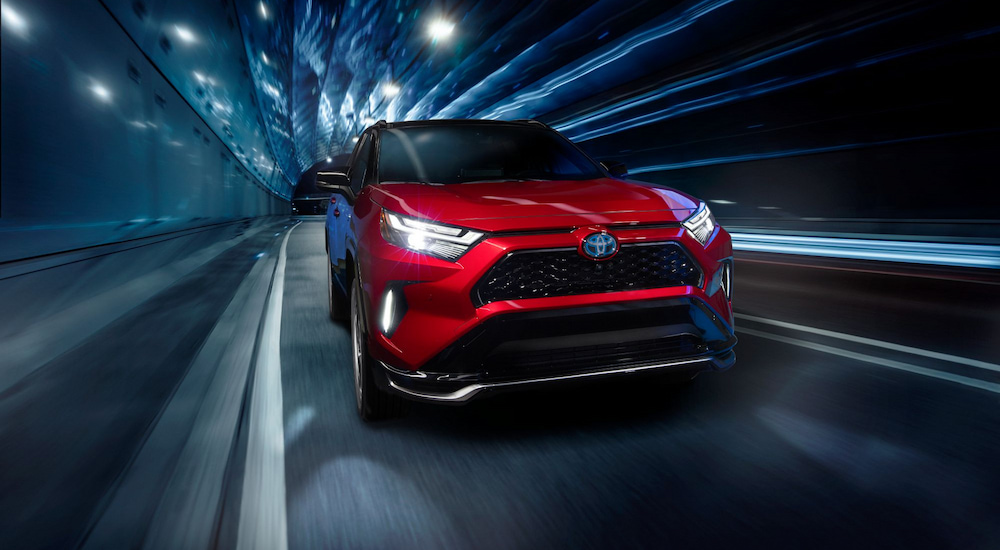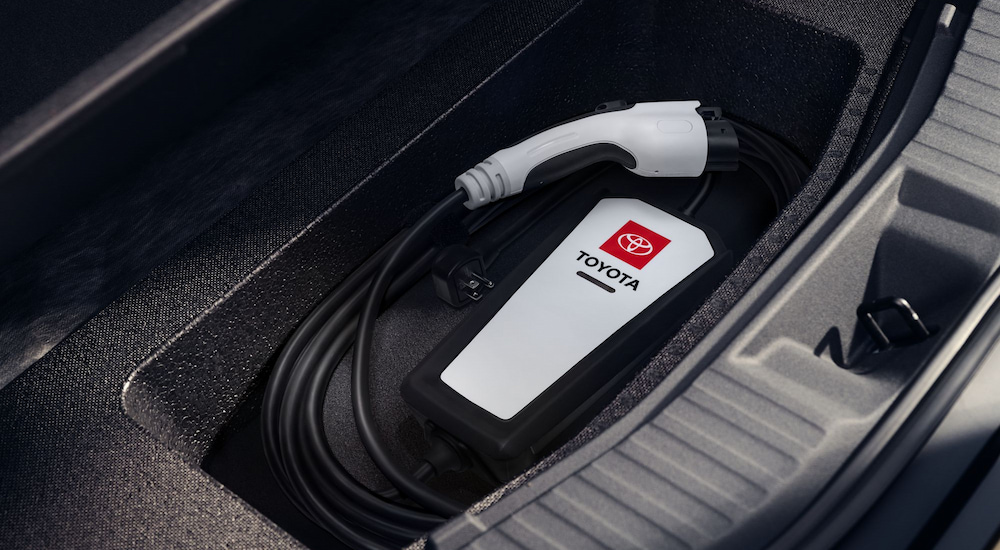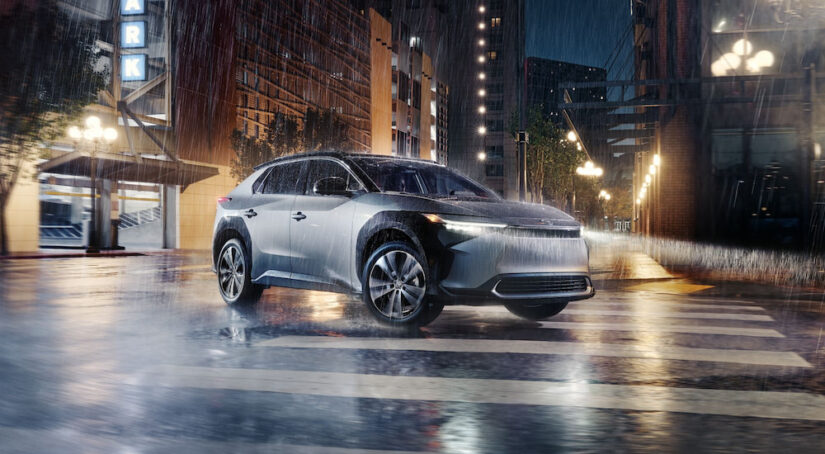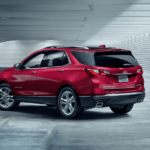In the automotive world, evolution is everything. We all know how easy it is to get stuck in our ways and work ourselves into a rut, but in order to ensure success, automakers need to be continually reinventing the wheel. Over the last decade, this trend has largely played out in the form of new hybrid, plug-in hybrid, and battery-electric models. From well-established names to spunky startups, electric cars, trucks, and SUVs certainly look to be the wave of the future as changing consumer tastes and government regulations coax the market in a new direction.
Toyota has long been a leader in the hybrid market with the early success of the Prius. Hitting your local Toyota dealer around the turn of the millennium, the Prius was the world’s first mass-produced hybrid. The compact set the stage for the coming wave of electrification and served a vital role in demystifying the world of hybrids for the average driver. Despite the Prius’ success and importance, Toyota has been a little more measured in the jump to full-on battery electric vehicles.
That all changed with the debut of the all-electric bZ4X, which seeks to do for Toyota’s BEV segment what the Prius did for hybrids. With its swift acceleration, roomy cabin, and impressive efficiency, the bZ4X marks an exciting addition to the Toyota lineup, but it’s not without its competition. Toyota’s best-selling RAV4 has also been upgraded in recent years with two electrified models to choose from: the RAV4 Hybrid and, more recently, the plug-in RAV4 Prime. How does the bZ4X compare with the plug-in hybrid version of Toyota’s ubiquitous SUV? Read on as we compare the bZ4X and RAV4 Prime and see how the two stack up when it comes to efficiency, performance, and range.
bZ4X
Introduced in 2023, the Toyota bZ4X marks a new era of electrification for the prescient Japanese automaker. The compact crossover is designed to set a roadmap for Toyota’s future EV success with its sporty design, practicality, and unparalleled efficiency. The bZ4X is built on the new e-TNGA modular platform, and it’s not alone. The e-TNGA platform can also be found underpinning the Subaru Solterra and Lexus RZ.
If you’re looking for a brief synopsis of the bZ4X, it’s all right there in the name. While it might not be as snappy as the RAV4 moniker, the bZ4X title actually gives us a lot of information in those four characters. The “bZ” prefix marks the model as one of Toyota’s new “beyond zero” zero-emissions vehicles. Conceived as a way to usher in a new era of both efficiency and performance, the bZ4X is the first of seven bZ models that will hit the market in the coming years.
Next, there’s the number four, which serves as Toyota’s shorthand for the relative size of the vehicle. The Japanese automaker has announced forthcoming models dubbed the bZ3X and bZ5X, which would presumably serve as smaller and larger alternatives to the compact bZ4X. Finally, there’s the letter X, which denotes the bZ4X as one of Toyota’s crossover models. The name might take some getting used to, but for those who can crack the code, it’s actually pretty enlightening and should help drivers delineate between the compact EV and forthcoming Toyota offerings.

RAV4 Prime
The RAV4 has been one of Toyota’s most popular models for almost three decades. First hitting the American market in 1996, the compact crossover SUV has won over drivers with its versatility, ample cargo room, and Toyota’s iron-clad reputation for reliability. This combination has led to plenty of success for the RAV4, which routinely tops lists of best-selling vehicles, both domestically and internationally. The RAV4 was the country’s most popular SUV in 2023, with over 434,000 units sold. Those types of numbers are hard to ignore and make the RAV4 a compelling starting point for anyone in the market for a new vehicle.
The RAV4’s success, combined with the industry-wide push towards electrification, has seen Toyota introduce two electrified versions of the chart-topping RAV4 in recent years. First came the RAV4 Hybrid, which combines a 2.5-liter four-cylinder engine with electric motors to give the all-wheel drive crossover 219 hp to play with. Those looking for an even more performance-focused RAV4 option were rewarded for their patience in 2021 when Toyota rolled out the RAV4 Prime. The RAV4 Prime still features a 2.5-liter four-cylinder engine and electric motors but adds a larger battery to turn the crossover into a true powerhouse of a plug-in hybrid electric vehicle (PHEV) with 302 hp on tap.
Efficiency
When it comes to efficiency, you can’t do much better than an all-electric vehicle like the Toyota bZ4X. The brand’s new BEV delivers an impressive 119 MPGe combined. Like many electric vehicles, the bZ4X is built with regenerative braking, an innovative feature that allows the vehicle to recapture the energy that would otherwise be wasted every time you step on the left pedal. This mechanical energy is converted into electrical energy and sent to the battery, where it can help to top off your power reserves. The bZ4X’s regenerative braking feature can also be turned off if you’re not worried about extending your range, allowing owners to customize their ride to their current driving demands.
In terms of efficiency, the RAV4 Prime struggles to keep pace with the bZ4X for a few simple reasons. First off, there’s the difference in performance. While neither crossover is designed for the track, the RAV4 Prime offers 50 percent more horsepower than the all-electric bZ4X. This might result in a more exciting ride, but it comes at the cost of efficiency, with the RAV4 Prime topping out at an EPA-estimated 94 MPGe combined when in electric mode. When the gasoline engine is running, that figure drops to 38 MPG combined. Lastly, there’s the drivetrain. While the bZ4X is offered in both front-wheel and all-wheel drive configurations, the RAV4 Prime is limited to a single all-wheel drive setup that, while handy in slippery weather, takes its toll on efficiency.
Range
The bZ4X is powered by either a 71.4 kWh battery for the single-motor version or a slightly larger 72.8 kWh pack in its dual-motor guise. The front-wheel drive model delivers an estimated 252 miles of all-electric range, while the dual-motor option lags slightly behind at 228 miles. Without a gas engine to fall back on, drivers will have to become accustomed to routine charging, which takes about 9.5 hours when connected to a Level 2 charger. Using a Level 3 DC fast charger shrinks that timeframe to just around 30 minutes to get an 80 percent charge, which can be a godsend when it comes to longer road trips.
Battery size represents one of the biggest differences between hybrid and all-electric models. In a plug-in hybrid like the RAV4 Prime, the battery is only partially responsible for pushing the car down the road, which is why the crossover can get away with a relatively small 18.1 kWh battery pack. That’s enough juice to drive a little over 40 miles in electric-only mode, putting the RAV4 Prime at a seemingly clear disadvantage. That said, the SUV’s range is essentially unlimited as soon as a little gas is introduced into the equation. With a full tank of gas, the RAV4 Prime can travel around 600 miles between fill-ups, giving it more than twice the range of the bZ4X. When connected to a Level 2 charger, the RAV4 Prime’s battery can be charged in around 2.5 hours, but it is not compatible with Level 3 DC fast charging.
When it comes to range, picking a winner is a little more difficult. The bZ4X clearly bests the RAV4 Prime when it comes to all-electric range, but it really all comes down to how the vehicle will be used. If range is a dealbreaker and you don’t mind burning gas from time to time, a plug-in hybrid like the RAV4 Prime offers the sort of flexibility that the bZ4X just can’t match. However, if reducing your fuel costs and carbon footprint is the goal, the bZ4X is hard to beat, especially for those who tend to stick to shorter trips.

Performance
With the bZ4X, Toyota has put an emphasis on efficiency over speed. There’s certainly nothing wrong with that approach––especially as it aligns with the ethos of the average EV driver––but those seeking an edge-of-your-seat ride might be underwhelmed by the crossover’s 201 hp. Those seeking a little more pep can upgrade to the all-wheel drive version, but the bump in power is pretty modest at 214 hp. That’s good enough for a zero to 60 mph time of 6.3 seconds, but it isn’t going to earn you a checkered flag anytime soon.
With two power sources to draw from, the RAV4 Prime certainly ups the ante when it comes to performance. The 2.5-liter engine and electric motors give the RAV4 Prime a combined output of 302 hp. That’s a considerable improvement on the bZ4X, and the model’s acceleration really caught our attention. With a zero to 60 mph time of 5.4 seconds, the PHEV isn’t just a full second faster than the bZ4X; when it launched, it was the second-fastest car in Toyota’s stable behind only the GR Supra sports car. That sort of speed might not be necessary when you’re on your daily commute or doing some errands around town, but it’s sure nice to have.
A little electrification goes a long way on the RAV4 Prime, allowing drivers to experience the popular SUV like never before. The bZ4X is certainly a comfortable, responsive ride, but if it’s raw speed that you’re after, look no further than the RAV4 Prime.
Two Takes on Electrifications
The Toyota bZ4X and RAV4 Prime represent two very different takes on electrification. As the first in a forthcoming lineup of all-electric models, the bZ4X is a statement of intent from the Japanese automaker. The crossover’s respectable all-electric range and friendly driving dynamics should serve most drivers quite well, but the bZ4X’s efficiency and environmentally friendly nature are the SUV’s real selling point. On the other hand, with the RAV4 Prime, Toyota has taken its most beloved model and bestowed it with a plug-in hybrid powertrain that offers some real advantages in terms of both performance and range.
By expanding the RAV4 lineup to include this new PHEV model, Toyota is helping to ease the transition to electrification by wrapping some intriguing new advancements in a familiar package. No matter which model you choose, you’ll enjoy the selling point that’s led so many drivers to choose Toyota time and time again: reliability. Making the switch to an electric vehicle is not without its challenges, but Toyota’s reputation for quality and low cost of ownership means you’ll have one less thing to worry about.



